Thingiverse

Telesope helical focuser by calzzone
by Thingiverse
Last crawled date: 3 years ago
Backstory:
My Newtonian telescope came with a cheap focuser which does not allow me to focus on a DSLR. This issue is common with entry-level Newtonians and can be solved with either photographing through a lens (eypiece with camera adapter / Barlow / specially designed lenses) which "resets" the focal plane or with a better focuser which goes deeper into the telescope. I wanted to photograph with no additional lenses (aka "prime focus") but slimmer focusers are expensive (may be worth it, though).
I was afraid that with a traditional rack and pinion focuser design, I could not achieve a fine enough level of control of the focus distance so I chose a helical design, which is just a glorified screw. In retrospective, it would have been fine with a traditional design which has some big advantages:
The camera retains the same orientation.
Easier to use.
Faster to travel large distances, needed when I use eyepieces.
Design parameters
The outer diameter on my telescope is 14 cm. The original focuser was attached with 3 M4 screws arranged as a triangle. I had to match that.
The camera (Canon EOS 1300D) with T2-1.25 in adapter needs to go 54 mm deeper than eyepieces. The focus plane range is about 2-3 cm, between stars and close objects. Therefore, my focuser needed to travel at least 7 cm and still have 2 cm for support and 1 cm just in case (adjusting collimation moves the focal plane). I made it 10 cm.
The focuser needs to solidly support 500 grams of expensive camera and / or eypieces even 10 cm out of the telescope tube. It needs to move easily enough but with no backlash.
I wanted some quick way to measure how far into the telescope is the focuser. I cut a slot in the screw and placed some markings with a marker.
An easy way to add a grippable surface at the front of the screw was to use a gear. Due to the holes for the screws, it can't actually be used as a gear if you want to motorize the focuser (not easily).
Issues with the current design:
Due to the design, I have to turn the focuser 27 times to change focus between camera and eyepieces. Also, the camera rotates with the focuser. Once I am close to focus, I still need to rotate it a lot to fine-tune it. This make the focuser quite awkward to use. For the next versions, I may increase the pitch from 2 mm (current) to maybe 10 mm / turn. 2 or 3 parallel threads maybe?
You will have to check tolerances. I expected this to be a problem and I made a pair of tester objects. I eventually set the outer diameter parameter of the screw to 32 mm - 0.25 mm and the inner diameter parameter of the shell to 32 mm + 0.25 mm.
I made the screw a bit to long and it hit the secondary mirror, so I sanded down about 5 mm out of the end of the screw. I also need to sand the interior of the focuser because my camera adapter fitted too tightly. As a result, eyepieces now fit to easily and I need to secure them with 3 M3 screws. I used long screws to use them as handles.
I did not measure correctly the placement of the screws which attach the focuser to the telescope. I had to use a drill to slightly enlarge the holes and some persuation to fit 3 M4 screws.
Next iterations / improvements
I don't intend to do another version anytime soon. My priorities are improving the mount and the motorization. In the far future, I may do a complete redesign with motorized control, camera rotation, and faster manual focusing. If I mange to do a good EQ mount, camera rotation may not be needed.
My Newtonian telescope came with a cheap focuser which does not allow me to focus on a DSLR. This issue is common with entry-level Newtonians and can be solved with either photographing through a lens (eypiece with camera adapter / Barlow / specially designed lenses) which "resets" the focal plane or with a better focuser which goes deeper into the telescope. I wanted to photograph with no additional lenses (aka "prime focus") but slimmer focusers are expensive (may be worth it, though).
I was afraid that with a traditional rack and pinion focuser design, I could not achieve a fine enough level of control of the focus distance so I chose a helical design, which is just a glorified screw. In retrospective, it would have been fine with a traditional design which has some big advantages:
The camera retains the same orientation.
Easier to use.
Faster to travel large distances, needed when I use eyepieces.
Design parameters
The outer diameter on my telescope is 14 cm. The original focuser was attached with 3 M4 screws arranged as a triangle. I had to match that.
The camera (Canon EOS 1300D) with T2-1.25 in adapter needs to go 54 mm deeper than eyepieces. The focus plane range is about 2-3 cm, between stars and close objects. Therefore, my focuser needed to travel at least 7 cm and still have 2 cm for support and 1 cm just in case (adjusting collimation moves the focal plane). I made it 10 cm.
The focuser needs to solidly support 500 grams of expensive camera and / or eypieces even 10 cm out of the telescope tube. It needs to move easily enough but with no backlash.
I wanted some quick way to measure how far into the telescope is the focuser. I cut a slot in the screw and placed some markings with a marker.
An easy way to add a grippable surface at the front of the screw was to use a gear. Due to the holes for the screws, it can't actually be used as a gear if you want to motorize the focuser (not easily).
Issues with the current design:
Due to the design, I have to turn the focuser 27 times to change focus between camera and eyepieces. Also, the camera rotates with the focuser. Once I am close to focus, I still need to rotate it a lot to fine-tune it. This make the focuser quite awkward to use. For the next versions, I may increase the pitch from 2 mm (current) to maybe 10 mm / turn. 2 or 3 parallel threads maybe?
You will have to check tolerances. I expected this to be a problem and I made a pair of tester objects. I eventually set the outer diameter parameter of the screw to 32 mm - 0.25 mm and the inner diameter parameter of the shell to 32 mm + 0.25 mm.
I made the screw a bit to long and it hit the secondary mirror, so I sanded down about 5 mm out of the end of the screw. I also need to sand the interior of the focuser because my camera adapter fitted too tightly. As a result, eyepieces now fit to easily and I need to secure them with 3 M3 screws. I used long screws to use them as handles.
I did not measure correctly the placement of the screws which attach the focuser to the telescope. I had to use a drill to slightly enlarge the holes and some persuation to fit 3 M4 screws.
Next iterations / improvements
I don't intend to do another version anytime soon. My priorities are improving the mount and the motorization. In the far future, I may do a complete redesign with motorized control, camera rotation, and faster manual focusing. If I mange to do a good EQ mount, camera rotation may not be needed.
Similar models
thingiverse
free

Greika Telescope ocular adapter 1,25"
...ingiverse
adapter for focus correction mini newtonian telescope. 76mm 300mm
i changed the eyepiece socket to gain 5 mm of focus.
thingiverse
free
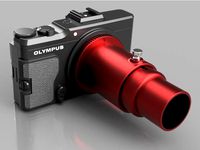
Variable Telescope Camera Adapter for Prime Focus and Eyepiece Projection, M4/3 mount to 1.25" telescope by Facocero
...ojection camera adapter 1.25" for telescope prime focus and eyepiece projection photography (olympus - panasonic, micro 4/3)
thingiverse
free

1,25' Eyepiece Adapter Newtonian Telescope by FritzSM
...ith all cheap chinese telescopes.
must be printed with 0,2mm layer in order to gear get right...
solidwork original file added.
thingiverse
free

Low Profile Telescope Focuser by asmacdo
...y asmacdo
thingiverse
just under 2" this focuser adds much needed back focus to a newtonian scope. no attachment apparatus.
thingiverse
free

Helical Crayford Focuser for Newtonian Telescope by Buback
...v1.5 for now. the bearings are attached to 'petals' similar to a camera iris, which are held closed with...
thingiverse
free

Customizable Helical Crayford Focuser for Newtownian Telescope by robsch
...
https://github.com/openscad/mcad
https://github.com/johk/nutsnbolts
update: the customizer shows more meaningful parameters now.
thingiverse
free

Variable Telescope Camera Adapter for Prime Focus and Eyepiece Projection, Fujifilm X mount to 1.25" telescope by Facocero
...le eyepiece projection camera adapter 1.25" for telescope prime focus and eyepiece projection photography (fujifilm x mount)
thingiverse
free

1.25inch,Telescope Focuser by x1200idt
...rew hole is 4 mm.
eyepieces can not be screwed.
2017/02/23
the new model made it a mechanism to reduce looseness of the eyepiece.
thingiverse
free

2-Inch Telescope Eyepiece Extension Tube by jungleb0y
...graphic applications
adds 2" of extension, fits in 2" telescope focusers, and accepts 2" eyepieces or accessories.
thingiverse
free

3D Printed Telescope Focus Mount by geeksarebeta
...friends here.
the focuser will accept a standard 1.25" eyepiece, again some sanding may be required to make it fit smoothly.
Telesope
thingiverse
free

Splitable Bahtinov Mask Generator by Ryoko
...big enough to make full sized mask for big telesope so i've made some additional features to original design....
thingiverse
free

Universal foot for telescope finders / Sucherfuß Teleskop by energiebrand
...from flank to flank. the foot fits to skywatcher telesope finder scope shoes and similar. i used the foot...
thingiverse
free

Telescope Mounted Laser Pointer by charlesodonnell
...mounted laser pointer by charlesodonnell thingiverse this is a telesopemounted holder for a laser pointer. i bought this pointer...
thingiverse
free

Laser Collimator by seanmcclain
...by seanmcclain thingiverse i used the "laser collimator for telesope by gyrobot" thing 101030 as a starting point and...
thingiverse
free
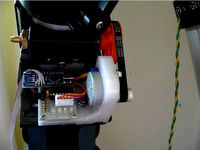
poor man's telescope tracker by otherthing
...tracker by otherthing thingiverse this is a very cheap telesope tracker with the base components cost less than 10$....
3dwarehouse
free

Gewehr 43
...and was a good sniper's rifle. #43 #axis #cd184 #coasterdude184 #german #gewehr #gun #scoped #sniper #two #war #weapon #world
3dwarehouse
free

Pedestal Wooden
...ated by means of bottom channel & telesopic channel along with 4' die casted handle as well as central locking mechanism.
Helical
3d_export
$5
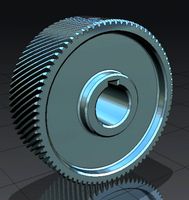
helical gear
...helical gear
3dexport
helical gear
3d_export
$5
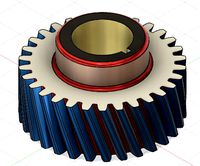
Helical Gear
...l contact ratio which can improve vibration and noise. badly designed helical gears can be noisier than well designed spur gears.
turbosquid
$5
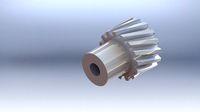
Helical Gear
...squid
royalty free 3d model helical gear for download as stl on turbosquid: 3d models for games, architecture, videos. (1502723)
turbosquid
$4

helical gears
...id
royalty free 3d model helical gears for download as blend on turbosquid: 3d models for games, architecture, videos. (1423917)
turbosquid
$40

Helical Stairs
...el helical stairs for download as 3ds, max, ige, obj, and fbx on turbosquid: 3d models for games, architecture, videos. (1422987)
turbosquid
$32
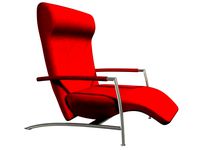
armchair-Helical
... available on turbo squid, the world's leading provider of digital 3d models for visualization, films, television, and games.
turbosquid
$20

helical gear
... available on turbo squid, the world's leading provider of digital 3d models for visualization, films, television, and games.
turbosquid
$10

helical gear
...cal gear for download as max, unitypackage, 3ds, fbx, and obj on turbosquid: 3d models for games, architecture, videos. (1667275)
turbosquid
$4

Helical gear
... gear for download as sldpr, 3dm, 3ds, fbx, ige, obj, and stl on turbosquid: 3d models for games, architecture, videos. (1530622)
3d_export
$50

HELICAL BEVEL GEAR
...lel and perpendicular. in parallel-axis helical gears the two opposite-hand gears provide quiet operation and high load capacity.
Focuser
turbosquid
$10

Focused Thank You Text Animation
...ocused thank you text animation for download as obj and blend on turbosquid: 3d models for games, architecture, videos. (1452421)
3d_export
free
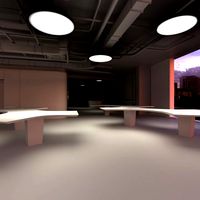
moon moh24wh60
... ring completely diffused focusing its output in a wide beam drawing attention to interior space by making the ambiance standout.
3d_export
$10
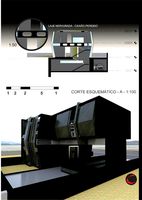
modern architecture
... scratch with modern references and fundamentalist intention of "different". model focused on the external environment.
3d_export
free
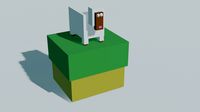
low-poly sheep low-poly
...opment with textures. executed without plug-ins, is ready for use in a variety of formats (you can write if you need a specific).
3d_ocean
$12

Artemide Tolomeo Wall Mini
...s of 74cm, this luminaire softly and pleasantly focuses light. and when it is not being used, it can be made compact so that i...
3d_export
$5

fidget spinner
... fidget to relieve anxiety,<br>i'm providing a cad model of the same can also provide .stp or .iges format if required.
3d_export
$18

high rise building 3
...ng.<br>the high rise building 3 created with the blender. it can be use making for animation,video games and various thing.
3d_ocean
$19

Alisa v.1.0
...hotogrammetry. alisa is one of a first in a long line of 3d body scans. focused on capturing as much detail of the human anato...
3d_export
$8

Ken Kaneki - tokyo ghoul
...une focuses on brute force to take down enemies.<br>i printed it personally with my elegoo saturn at 50 microns ... a sight
3d_export
$25

proton ghostbusters
...ly polarized protons that electrostatically traps the negatively charged energy of a ghost, allowing it to be held in the stream.

